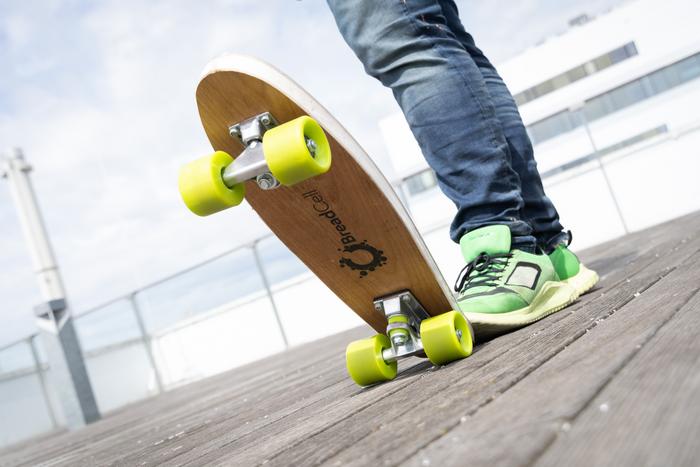
In a groundbreaking advancement poised to revolutionize sustainable materials, researchers from Graz University of Technology (TU Graz) and their international collaborators have developed innovative cellulose-based foams through an eco-friendly process that mirrors bread baking. These novel foams, emerging from the EU-funded BreadCell project, promise to replace conventional oil-derived foams with a fully biodegradable and recyclable alternative, opening new frontiers in multiple industries from automotive to sports.
Traditional foams, ubiquitous in products ranging from car interiors to sports equipment, have typically relied on petrochemical sources that contribute significantly to environmental degradation. The urgent global demand for sustainable materials has driven scientists to seek plant-based alternatives that do not compromise performance. Cellulose, the abundant organic polymer found in plant cell walls, offers a compelling solution due to its renewability and superior biodegradability. Harnessing this natural polymer, researchers devised a method that ingeniously adapts the fermentation and rising principles of breadmaking to foam creation, resulting in materials with tailor-made properties and markedly reduced ecological footprints.
One of the prominent voices behind this innovation, Stefan Spirk from the Institute of Bioproducts and Paper Technology at TU Graz, emphasized the critical nature of integrating sustainability across diverse sectors. The cellulose foams crafted under BreadCell are engineered to replace conventional plastics with materials sourced from renewable biomass. Their mechanical versatility is particularly striking; the foams exhibit varying densities and structures, optimized for distinct applications such as energy absorption in automotive crash components, thermal insulation in construction, and cushioning in sports gear, including shoe soles.
.adsslot_pvm5SOV7yM{width:728px !important;height:90px !important;}
@media(max-width:1199px){ .adsslot_pvm5SOV7yM{width:468px !important;height:60px !important;}
}
@media(max-width:767px){ .adsslot_pvm5SOV7yM{width:320px !important;height:50px !important;}
}
ADVERTISEMENT
Achieving the ideal performance required mastering the intricate relationship between the microscopic design of cellulose fibers and the resultant foam’s macroscopic mechanical properties. To this end, the team deployed advanced simulation models that correlate fiber orientation, bonding, and density with resilience and flexibility. Comprehensive experimental characterization was conducted using specialized testing rigs at TU Graz capable of subjecting samples to dynamic and rapid loads, simulating real-world conditions such as impacts or prolonged stresses. This dual approach of empirical data acquisition and computational modeling enabled precise tuning of foam properties to meet rigorous standards.
A fascinating insight emerged during the development process regarding foam density uniformity. While uniform density is typically desired in foam materials, the researchers discovered that a deliberately induced gradient, with a softer central layer, improved impact mitigation in applications like bicycle helmets. This layered structure allowed for controlled shearing between layers, significantly reducing rotational forces transmitted to the brain upon impact. This biomimetic design principle parallels state-of-the-art safety technologies such as the Multi-directional Impact Protection System (MIPS), demonstrating how natural fiber materials can be engineered to rival sophisticated synthetic solutions.
Beyond theoretical development and lab-scale production, the research consortium advanced toward practical demonstrations. Prototypes including bodyboards, skateboards, bicycle helmets, and orthotic shoe insoles were fabricated from the cellulose foams and subjected to functional testing. These demonstrators highlight not only the multifaceted applicability of the material but also its capacity to meet structural and safety criteria in real-world products while offering enhanced environmental credentials. Notably, the foams exhibit intrinsic moisture regulation and sound-absorbing capabilities, broadening their functional appeal.
The BreadCell project is emblematic of successful transnational academic and industrial collaboration. Coordinated by Chalmers University, the project involves partners such as the University of Vienna, which contributed expertise in sandwich panel design for lightweight construction, and Spain’s Tecnalia, which evaluated scalable industrial manufacturing processes. Additionally, BioNanoNet (BNN) in Graz conducted thorough assessments of the biodegradability and life cycle impacts, ensuring that sustainability claims hold under rigorous scrutiny.
Commercialization opportunities have swiftly followed the research achievements. A project spin-off company named FOAMO now leverages the developed technology to produce lightweight, cushioning insoles catered to the footwear market. By translating the research into market-ready products, the team demonstrates the industrial viability of cellulose-based foams, potentially catalyzing a shift towards greener materials in consumer goods. This evolution from laboratory discovery to entrepreneurial venture signals a promising trajectory for biobased materials adoption.
Underlying the project’s success is the interdisciplinary synergy between TU Graz’s Institutes: the Institute of Bioproducts and Paper Technology focused on material formulation and fiber chemistry, while the Vehicle Safety Institute applied engineering principles to optimize safety-critical features. This cross-domain collaboration exemplifies the multidisciplinary approach essential for translating raw biopolymers into usable, high-performance materials meeting modern demands.
Looking ahead, further research aims at refining process scalability and foam customization. The team is exploring new fiber modifications and additive formulations to enhance durability, moisture resistance, and acoustic properties without compromising biodegradability. Simultaneously, advances in computational modeling will continue to guide material design toward specific applications, aligning foam microstructures with tailored performance metrics.
In summary, the BreadCell project ushers in a paradigm shift in foam manufacturing, uniting nature-inspired processing with cutting-edge material science to deliver sustainable, high-performance cellulose foams. This innovation not only addresses pressing ecological challenges linked to petroleum-based plastics but also sets the stage for transformative applications spanning automotive safety, construction insulation, sports equipment, and beyond. By integrating environmental stewardship with advanced engineering, the project embodies the future of material innovation.
Subject of Research: Biobased cellulose foams with mechanical performance tailored through fiber design and simulations.
Article Title: Effect of xylan on the mechanical performance of softwood kraft pulp 2D papers and 3D foams
News Publication Date: 23-Mar-2025
Web References: http://dx.doi.org/10.32964/TJ24.3.131
Image Credits: Wolf – TU Graz
Keywords
Cellulose foam, biodegradable materials, sustainable polymers, fiber design, mechanical performance, impact absorption, simulation modeling, eco-friendly foam production, textile engineering, bio-based composites, automotive safety materials, sports equipment innovation
Tags: automotive industry sustainabilitybiodegradable alternatives to petrochemicalsBreadCell project advancementscellulose properties in foam productioncellulose-based foams developmenteco-friendly manufacturing processesenvironmental impact of traditional foamsreducing ecological footprints in manufacturingrenewable plant-based materialssports equipment materials innovationsustainable materials innovationTU Graz research collaboration





